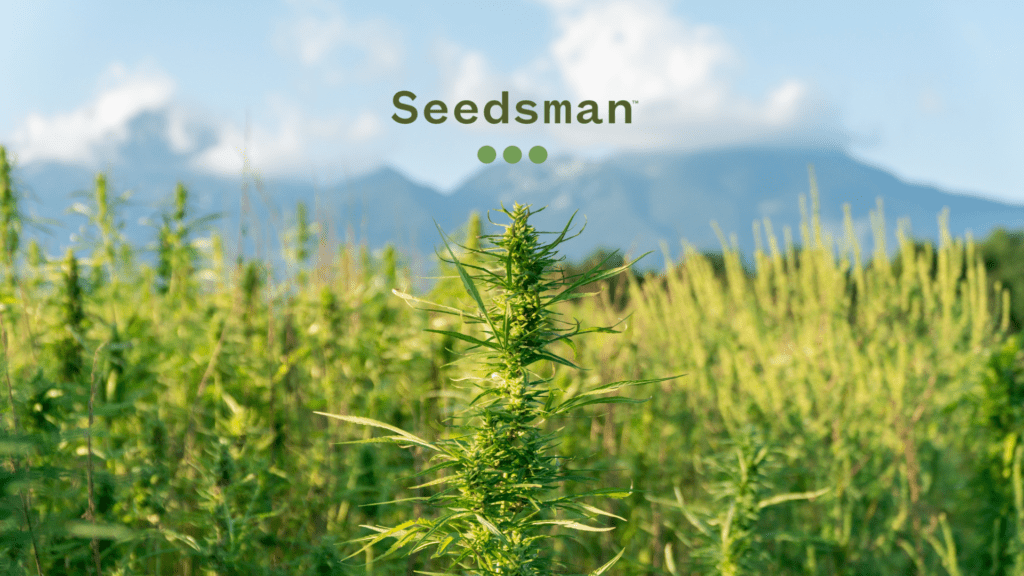
What Are Landrace Cannabis Strains?
Nowadays, most cannabis strains are hybrids. These result from cross-breeding techniques designed to marry specific features of two or more strains. Taking desirable traits from each plant and combine them in a new strain. For example, you might want the taste profile and THC levels of one particular plant, but the resilience or speed of growth of another, and by creating a hybrid, you get a new plant that combines those traits.
Hybrids are usually labelled as sativa-dominant or indica-dominant by breeders. When you’re shopping for seeds, you get a pretty firm idea of the characteristics of the hybrid strain.
Actual landrace strains (or heirloom strains) are original strains, cannabis plants indigenous to certain parts of the world. They haven’t undergone any cross-breeding and exist as nature intended. In other words, landrace cannabis strains developed naturally in the wild over centuries and grew without any interference or cultivation from humans.
Rather than being sativa or indica-dominant, these cannabis strains are pure sativa or pure indica – and are a lot harder to come by these days.
Landrace Cannabis Origins
Cannabis originated in the northeast Tibetan Plateau some twenty-eight million years ago (1). Its domestication began around twelve thousand years ago in East Asia, and all current cannabis and hemp cultivars likely diverged from a gene pool in China (2). After discovering its use and value as a fibre, food and medicine, explorers saw fit to take it on their travels through Asia.

As the plant’s reputation and desirability spread, so too did the plant itself, and it began appearing in Russia and Europe, then Africa, and from there to the Americas and Jamaica. As it travelled, it had to adapt to changing conditions in its environment to thrive and grow in climates both hot and cold.
Landrace Indica vs Sativa
In determining the origins of a landrace strain, knowing whether it’s a sativa or an indica can help. Indicas were traditionally known to have growing conditions in mountainous areas in or around Asia and evolved to grow as shorter plants with faster flowering periods. At the same time, sativas were core commonly found in equatorial regions. Landrace strains usually carry the name of their place of origin, which, if you know your geography, can help you quickly determine if it’s sativa or indica.

We haven’t yet mentioned ruderalis either.
Ruderalis is thought by many to be its own cannabis species. Believed to have originated in mountainous regions in Russia and Central Asia. What makes ruderalis different is that it flowers according to the plant’s age and is not its light exposure time like most cannabis plants. Ruderalis isn’t really something you’d smoke on its own.
However, its genetic stock is crucial for breeding autoflowering cannabis varieties.
Landrace Strains v Hybrid Strains
While the original landrace strains may have a degree of desirability, they’re pretty hard to come by these days – modern strains have become arguably far more potent, tastier, and easier to grow due to the cross-breeding genius of today’s experts. That’s not to say they’re impossible to find, though.
The legendary strains of the 60s and 70s – the ones you hear mentioned in old movies with names like Maui Wowie, Lamb’s Bread and Acapulco Gold – have kept enough gravitas that some people still grow them.

Modern strains are cultivated for higher potency and are therefore more desirable, so easier to come by. If you do manage to find a landrace strain going, give it a try by all means, but if you’re a seasoned consumer, you might find it tame compared to your usual puff.
We all owe gratitude to the landrace strains. They form the backbone of the original hybrid experimentation that led us to where we are today. Most landrace strains have suffered as a result, either losing genetic quality or potency to the point where some are still available but are a far cry from the original form.
Are Landrace Cannabis Strains Still For Sale?
True landrace strains with original phenotypes are very rare. Not because people don’t want them, but because the cannabis industry has evolved so much. For example, old-school haze can be traced in hundreds of different strains for sale right now. Unless your seeds come from Malawi, how can you be confident that strain labelled as “Malawi Haze” in your dispensary is the real deal?
You can’t, really. Modern growers usually have particular requirements, and most strains of cannabis fulfil these needs. High THC levels, massive yields, certain smells and levels of cannabinoids. Landrace genetics are the origin of modern cannabis, but the unique characteristics available in modern cannabis result from hundreds of years of cross-breeding.
Examples of Landrace Cannabis Strains
Durban Poison
Named after the port city in South Africa from which the strain originates, Durban Poison is an energizing sativa landrace with a unique smell and taste. It even has a unique bud structure, with round and fluffy-looking flowers. This strain once grew freely in the plains of South Africa. And it’s one of the all-time classic heirloom landrace strains. Due to modern breeding techniques, Durban Poison is available today but is likely markedly different from the original wild-growing strain.

Still, if you want to sample a landrace strain, Durban Poison is worth a shot to give you at least an idea of what they’re all about. People love this 100% sativa for its uplifting, energizing effects, high THC count, and distinct sweet and spicy taste profile. Click here for Durban Poison seeds.
Afghani
A pure indica, Afghani is a classic strain among the kings of original relaxation weed. Originating in the Middle East, Afghani is notoriously resinous, so much so that it’s the strain most commonly employed in the production of Afghan Black Hash. It’s said that this strain never required any human tinkering and was honed to perfection by Mother Nature over generations.

Nonetheless, human involvement took it to the next level. Afghani is believed to have found its way to the United States in the 1970s, just before the war on drugs. Cultivators have preserved impeccable genetics ever since. True Afghani is hard to find in bud form nowadays, but it’s noted for being a heavily sedating strain due to its 100% indica nature. Click here for Afghani seeds.
Acapulco Gold
One of the original and most frequently name-checked weeds of yesteryear. Acapulco Gold has the kind of résumé dreams are made of. High Times named this one of the top 25 strains of all time back in 2014. Cheech and Chong cemented its reputation as an elite strain by heavily referencing it in Up In Smoke. It’s one of the quintessential strains of the hippie era, but today this legendary strain is sadly much harder to come by – perhaps because it’s allegedly tricky to grow indoors.

Originally grown outdoors in Mexico before spreading to the rest of South America and Central America,. This strain was known for its cerebral effect coupled with a body high which could relieve aches and pains. It was considered a powerful strain thanks to its high THC and low CBD content, upwards of 20%. Not much is known about Acapulco Gold’s origins (maybe everybody was too high back then to remember), but it’s named for its geographical home and its gorgeous, resinous gold-flecked nugs. Legend tells of its sweet toffee-like taste and burnt toffee aroma, a sweet sativa with a potent kick. Click here for Acapulco Gold seeds.
Hindu Kush
Hindu Kush is an indica strain that hails from the same-named Hindu Kush region mountain range bordering Afghanistan, Pakistan and northern India. This region has long been the source of famously potent cannabis. It is believed to be one of the oldest cannabis growing sites in the world. Since its introduction to the west, this strain has long been a favourite smoking strain as well as an excellent breeding plant. It has been selectively inbred over many generations, resulting in highly uniform plants that grow with great consistency and reliability.

Hindu Kush is a compact, hardy strain. With a speedy flowering time and an excellent resistance to mould and plant diseases. In response to the harsh natural conditions in its home environment, it produces high numbers of resin-producing trichomes. The aroma of Hindu Kush is typically sweet and earthy with spicy and woody notes. When burnt, it has flavours of aniseed and sandalwood. Its relaxing high is not too heavy, and it is popular with medical users to combat pain, stress and nausea. Click here for Hindu Kush seeds.
References
- McPartland, John M.; Hegman, William; Long, Tengwen (14 May 2019). “Cannabis in Asia: its center of origin and early cultivation, based on a synthesis of subfossil pollen and archaeobotanical studies”. Vegetation History and Archaeobotany. 28 (6): 691–702. doi:10.1007/s00334-019-00731-8. ISSN 0939-6314. S2CID 181608199.
- Ren G, Zhang X, Li Y, Ridout K, Serrano-Serrano ML, Yang Y, Liu A, Ravikanth G, Nawaz MA, Mumtaz AS, Salamin N, Fumagalli L. Large-scale whole-genome resequencing unravels the domestication history of Cannabis sativa. Sci Adv. 2021 Jul 16;7(29):eabg2286. doi: 10.1126/sciadv.abg2286. PMID: 34272249; PMCID: PMC8284894.
Cultivation information, and media is given for those of our clients who live in countries where cannabis cultivation is decriminalised or legal, or to those that operate within a licensed model. We encourage all readers to be aware of their local laws and to ensure they do not break them.
Source link














